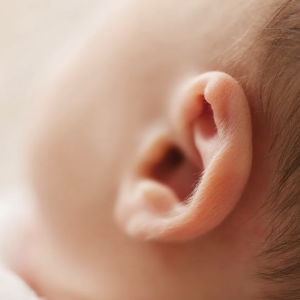Want to experience the greatest in board studying? Check out our interactive question bank podcast- the FIRST of its kind here: emrapidbombs.supercast.com
Author: Blake Briggs, MD
Peer Reviewer: Shad Baab, MD
Introduction
This review will cover the approach to diagnostic management of fever in neonates as well as children 1-36 months old. Fever in immunocompromised patients, preterm infants, as well as Kawasaki disease will not be covered. This is a daunting task to summarize such a broad pediatric topic in 2 pages, so we asked Dr. Shad Baab to join us. He’s a pediatric emergency medicine physician at Wake Forest Baptist Medical Center in North Carolina, you can check out his bio at the end of the handout.
Neonatal Fever
Sepsis is uncommon in the term and late preterm neonates. Its estimated in 5 per 1000 cases, however it is 15% of all neonatal deaths.
Here, we define “term” as >37 weeks. Late preterm is 34-36 weeks. The earlier the gestational age, the higher the rates of neonatal sepsis. For purposes of workup, a late preterm neonate that did not have a complicated post-delivery course (prolonged NICU stay, comorbidities, etc) should be treated the same as a full term neonate.
Neonatal sepsis is defined as an infectious syndrome that occurs at any point during the period of birth to 28 days.
Sources: By far, the most common cause of fever in a neonate is some non-herpetic virus (adenovirus, rhinovirus, etc). Surprised?
Accelerate your learning with our EM Question Bank Podcast
- Rapid learning
- Interactive questions and answers
- new episodes every week
- Become a valuable supporter
<1% of cases overall are due to bacteria. However, the risk of morbidity and mortality from these rare infections is too great, so therefore we work it up aggressively every time (at least right now- keep your eyes on future research which might change this tactic). Boards want you to be aggressive with neonatal fever.
For bacterial causes, think vertical transmission from mother. Group B Strep (GBS) and E coli are two frightening sources, the most common as well. Other agents: Listeria, Enterococcus, Herpes Simplex.
A UTI causes by E coli is the most common source of bacterial infection in a neonate. GBS is the most common cause of bacteremia.
Questions to ask parents when a febrile neonate arrives to the ED: vaginal delivery or c-section, gestational age, maternal GBS colonization (prior or most recent pregnancy), known Herpes Simplex infection or exposure, membrane rupture >18 hours (risk of sepsis is 10 fold), meconium-stained amniotic fluid.
Pregnancy history? Any complications during prenatal care or with prior neonate.
GBS screening and intrapartum ABX drastically reduce risk of infection but does not eliminate it.
Presentation
Major range from a subtle, “one-time” fever, to severe shock. Most common symptom by far is poor feeding coupled with lethargy and irritability, followed less commonly by various nonspecific symptoms like vomiting, diarrhea, respiratory symptoms (tachycardia, grunting, tachypnea). Look for apnea in GBS cases, its classic on boards. Tone is also critical to observe. All neonates should have a flexed knee, hip position at all times. Livedo reticularis is classic in E coli infections.
Seizures are uncommon but highly associated with infection! 20-50% of them are associated with meningitis.
Fever level: preterm and late preterm infants are more likely to be hypothermia. Dr. Baab states <96 F is a good cut off for who gets a workup.
Sometimes, a neonate will be brought in by mother from home with a “reported fever”. A study looked at this and found that Moms are pretty darn good at accurately predicting their child had a fever by touch alone. When the child was brought into the ED, >90% had a fever hours after Mom felt a tactile one.
However, what happens if the child has a “reported fever” at home and does not in the ED? Well, this is beyond boards but a common clinical occurrence. Dr. Baab recommends observing them in ED if neonate looks well overall, and remeasuring temperature.
Diagnosis
Because presentation is nonspecific and the risk of missing sepsis too great, labs and imaging should be performed in any infant with a fever or any major identifiable sign or symptom (not just “the sniffles” but concerning ones like seizure, changes in tone, hemodynamic instability).
This is what we like to call the “full court press”
CBC, CMP, HSV PCR, blood culture, Urine studies with culture, LP (with cell count, culture/gram stain, HSV). +/- CXR (can be added if there are clear respiratory symptoms).
Interestingly, there is no evidence that any of this workup actually reduces mortality. Every neonate will get antimicrobials, every neonate is admitted. None of these labs actually risk-stratify neonates into high or low risk patients. However, this workup is the workup on boards. Be aggressive.
Empiric ABX should be given:
-Ampicillin and Gentamicin for early onset sepsis (<7 days of life)
-Ampicillin and Gentamicin or Cefotaxime (>7 days of life)
-Acyclovir should be given if the neonate is <3 weeks. HSV is the most common cause of meningitis in neonates. Rates of HSV infections dramatically drop >3 weeks old, and therefore no need to give acyclovir empirically unless strong suspicion/risk factors.
Amp/Gent are preferred in the literature due to reports of emerging cephalosporin-resistant organisms. Also, cephalosporins are not active against Listeria. A few studies showed a lower mortality with Gentamicin compared to those treated with cefotaxime.
In reality, their effectiveness is the same as third-gen cephalosporins, and given such low rates of sepsis in neonates in this country, this really doesn’t matter.
29 days to <3 months, a gray area
What a strange little transition period. Historically, these infants were treated the same as neonates in terms of workup. Since 2010, the Step-by-Step approach to Febrile infants has gained traction from Europe. They tested ~2,100 infants aged 21 days to <3 months and risk-stratified them into low or high-risk groups. High risk infants received a full workup (same as neonatal fever). The low risk group was sent home with pediatrician follow up. Low risk infants needed to be well-appearing. See presentation section above for details.
This low risk stratification was carried out by the following criteria: normal urine analysis, procalcitonin <0.5 ng/mL, CRP <20 mg/L, ANC <10,000/mm3
The study found if these criteria were met, the risk of invasive bacterial infection was <0.7%. When the study was performed, <1% were “misdiagnosed” into the low risk group, these infants had no morbidity or mortality, but that scared a lot of physicians and since these infants came from<29 days old, many decided to not use the Step-by-Step in those <29 days old and just perform a standard full neonatal workup. Sure, whatever.
Once a child is deemed high risk, add on a blood culture and standard broad-spectrum antibiotics. CXR and HSV are case-by-case and no evidence supports routine usage in those >29 days to <3 months old. Dr. Baab hits us with a knowledge bomb again: “I usually draw a blood culture with my other initial labs so I don’t have to stick the infant again with a needle. I hold onto the blood culture and only send it if they are deemed high risk. Once that happens, they will be admitted with antibiotics.” Wise man indeed.
>3 months old, welcome to the Wild West
Stable, otherwise healthy children >3 months old get a selected workup depending on their symptoms and risk factors. By far, viral infections make up >95% of infections in children (you guessed it).
Urine analysis: always get in all circumcised males <6 months, uncircumcised males <12 months, and all females < 2 years old.
CXR: not routine. If clear respiratory symptoms or physical exam suggests pneumonia, get it.
When do you not have do CXR, labs, or urine analysis? Clear source of infection. This gets abused a lot. Clear source means clear hard evidence of an infection: otitis media, skin/soft tissue, +strep throat test.
Otitis media: do not diagnose if <3 months old. This is virtually impossible. We diagnose this in children >3 months, most commonly found in those <6 years old but it can occur with less frequency well into adulthood.
Strep throat: do not test if <2 years old. Lots of false positives from colonization.
What fever is concerning?
We hear a lot of mixed data on this. According to Merlin (aka Dr. Baab), a fever >105F is concerning for some severe infectious process that warrants further investigation. However, there really is no clear study delineating if there is a greatly increased risk. There are a few studies stating hyperpyrexia is associated with slightly higher risk of bacterial infections, however viral infections still remain the most common cause. In clinical practice, fever height is irrelevant in the absence of other symptoms.
As reported in the neonatal section, maternal reporting of tactile fever has a >90% correlation rate to an documented fever hours later. We work these up as any other otherwise healthy >3 month old.
Last words from Dr. Baab: “Trust your instincts, but please don’t given azithromycin for viral infections.” Well said sir.




